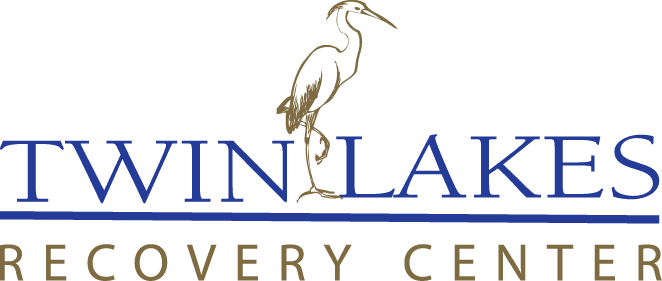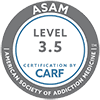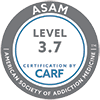 Prescription drug addiction is a valid concern for many people, and codeine is one medication frequently misused. When someone enters a rehabilitation facility for codeine addiction, often they require a dual treatment approach: one method for resolving the drug dependency and another to address the underlying health condition that initially required professional care.
Prescription drug addiction is a valid concern for many people, and codeine is one medication frequently misused. When someone enters a rehabilitation facility for codeine addiction, often they require a dual treatment approach: one method for resolving the drug dependency and another to address the underlying health condition that initially required professional care.
What You Should Know About Codeine Addiction and Treatment
Codeine is an opiate processed from naturally occurring alkaloids in the opium poppy or from an opium derivative, morphine. Pronounced “KOE-deen,” the term is Greek for “poppy head.” Its first medical use was in 1832 by French chemist Pierre-Jean Robiquet.
Primarily prescribed as an analgesic to control intense coughing, codeine is also recommended for temporary relief of moderate–to–-severe pain. The drug disrupts the brain’s cough reflex or changes how the brain and central nervous system respond to pain. Physicians often prescribe codeine medications to reduce symptoms and promote better sleep, but these drugs won’t treat the underlying health concern.
People can metabolize codeine differently, leading to variations in its effectiveness and potential side effects. Some individuals may be “ultra-rapid metabolizers,” experiencing faster and more extensive conversion to morphine.Codeine can interact with other medications, particularly those that depress the central nervous system, such as benzodiazepines or alcohol. These interactions can increase the risk of side effects, including respiratory depression.
The average treatment time is 2 to 4 weeks. Physicians prescribe medications, usually in capsule, tablet, or solution form, either alone or combined with other analgesics, including the following products:
- Acetaminophen, such as Tylenol with codeine)
- Aspirin
- Antitussives, also known as cough suppressants, such as Robitussin A-C)
Additionally, the University of Utah Pharmacy Services indicates that “prescription cough and cold medicines can contain codeine or hydrocodone in combination with antihistamines, decongestants, or other medications to manage cold symptoms.”
Codeine and cocaine aren’t the same, as they come from different plants. However, codeine is classified as a narcotic, just like cocaine, and listed as a Schedule III drug by the United States Drug Enforcement Administration. By this definition, overuse might “lead to moderate or low physical dependence or high psychological dependence.”
In 2017, the Federal Drug Administration revised manufacturer labeling requirements for prescription opioid cough and cold medicines, including those containing codeine, to limit use to individuals 18 and older in specific circumstances, and they advised against use for pregnant and breastfeeding women, as well as children under 18. Opioid medications are also not recommended for people with a history of alcohol or drug addiction.
Codeine Side Effects
Typically, codeine abuse happens when someone takes the medication for longer or in greater quantities than prescribed, or wants mind-altering sensations such as drowsiness, euphoria, and relaxation. Street names for codeine include:
- Captain Cody
- Fours
- Lean
- Little C
- Purple drank
- T1
- Texas tea
- Sizzurp
It’s common for people to snort crushed tablets or to mix codeine cough syrup into alcohol or soft drinks. It’s crucial to emphasize that the recreational or misuse of codeine, especially in large amounts or in combination with other substances, can lead to serious health risks, including addiction, respiratory depression, and overdose. Misuse causes numerous side effects, including but not limited to:
- Asthmatic attacks or other forms of restricted breathing
- Confusion, dizziness, and/or headaches
- Constipation and difficulty urinating
- Dry mouth
- Irregular menstruation
- Lack of coordination and muscle weakness
- Rashes
- Reduced blood pressure
- Sleepiness and lethargy
- Sexual dysfunction
Mixing Alcohol and Codeine
If alcohol and codeine are combined, these side effects are more severe. Both substances can depress the central nervous system, and when combined, they can enhance each other’s effects, leading to increased sedation and respiratory depression.
- Central Nervous System Depression: Both alcohol and codeine are central nervous system (CNS) depressants, meaning they slow down brain activity. Combining them can lead to excessive CNS depression, causing drowsiness, dizziness, impaired coordination, and, in severe cases, respiratory failure.
- Increased Sedation: The sedative effects of alcohol and codeine can be additive, making individuals more prone to extreme sedation and even loss of consciousness.
- Impaired Cognitive Function: The combination of alcohol and codeine can impair cognitive functions such as judgment, decision-making, and reaction time. This can lead to accidents and an increased risk of injury.
- Increased Risk of Overdose: Both alcohol and codeine can be toxic in high doses. Combining them increases the risk of overdose, which can be life-threatening. Symptoms of overdose may include difficulty breathing, extreme drowsiness, and loss of consciousness.
- Gastrointestinal Issues: Both alcohol and codeine can irritate the gastrointestinal tract. Combining them may increase the risk of stomach bleeding and other gastrointestinal problems.
- Liver Toxicity: Codeine is often metabolized in the liver, and alcohol can also have an impact on liver function. Combining the two substances may increase the risk of liver damage.
- Additive Side Effects: Alcohol and codeine can have similar side effects, such as nausea, vomiting, and constipation. Combining them may intensify these side effects.
Codeine Codeine Addiction and Treatment near Atlanta
Not everyone prescribed codeine for a medical condition develops a dependency on it, especially when used as directed. However, because codeine is a narcotic, it only takes approximately two weeks to become addicted if taken as a street drug or in greater doses than recommended. Additionally, codeine misuse often leads to cravings for stronger opiates, such as oxycontin or heroin.
If the initial health problem isn’t addressed directly, it’s far more challenging to reduce codeine dependency. So this is a critical factor when choosing an inpatient rehabilitation facility for yourself or a loved one. You need to be certain there’s a board-certified medical team onsite who can investigate the origin of the health issue and include treatment for it as well as codeine detoxification and further addiction care.
Too often, people are hesitant to seek out medical assistance for alcohol or drug dependency because they’re concerned about the potential of withdrawal complications. At Twin Lakes Recovery Center, a leading Atlanta-area addiction treatment center, we provide medically-supervised detoxification to minimize the psychological and physiological impact of this process.
Without a doubt, someone cleansing their body of toxicity isn’t going to feel their best, but depending on their level of drug dependence, most people only experience the following symptoms for about two weeks during detox:
- Anxiety, depression, and/or hopelessness
- Fatigue and/or wakefulness
- Flu-like reactions, such as body aches, fever, and headaches
- Increased appetite
- Irritability, moodiness, and aggression
- Shakiness and muscle spasms
- Skin eruptions such as acne, welts, and rashes
- Vomiting and persistent nausea
We are Here to Help
Once a person feels more physically comfortable, a team of professionals guides them through the real work of recovery: recognizing addiction as a brain disease, understanding the causes of it, and accepting the truth and effort of true healing.
Twin Lakes offers diverse therapeutic methods, 12-Step groups, an extensive veterans program, and other specialties to meet individuals where they are and support them with necessary tools to have the life they deserve—free of pain, grief, and trauma. If you or a loved one needs this type of comprehensive care, we can help.



